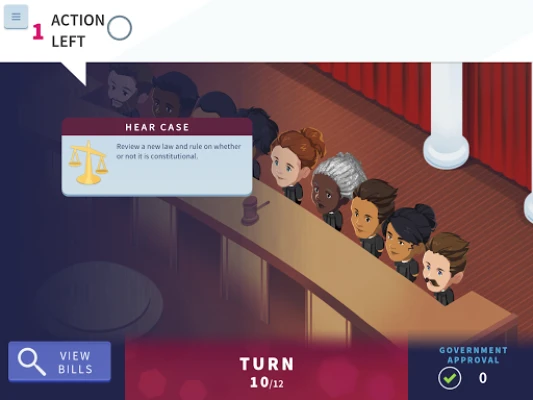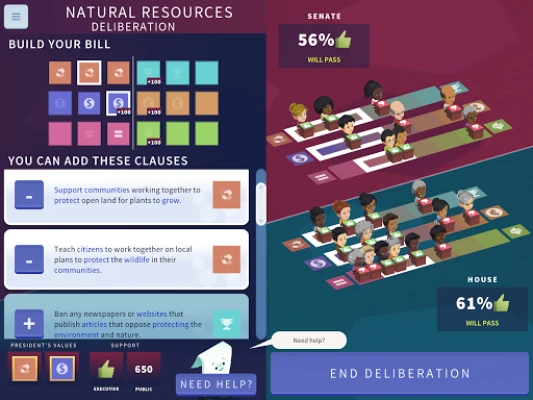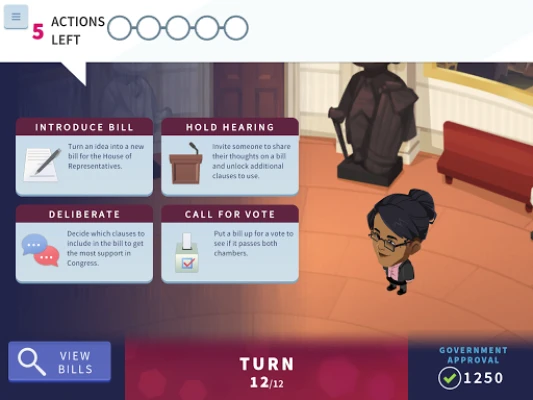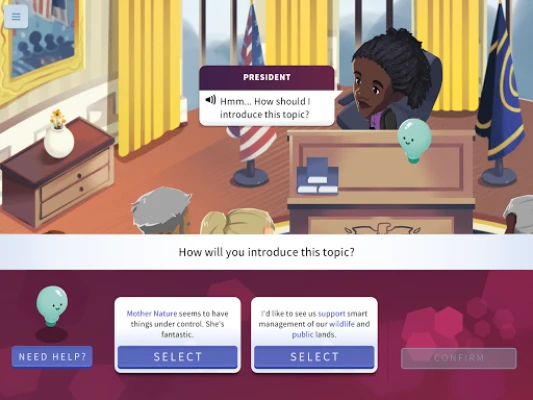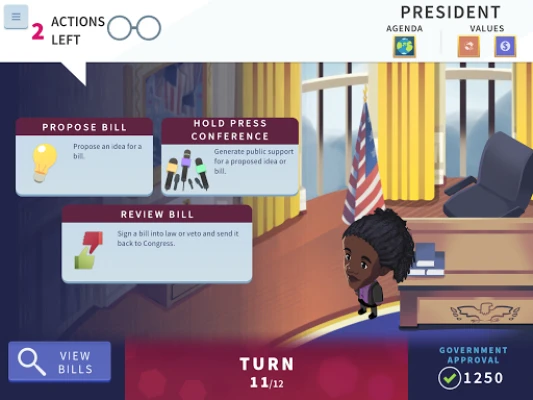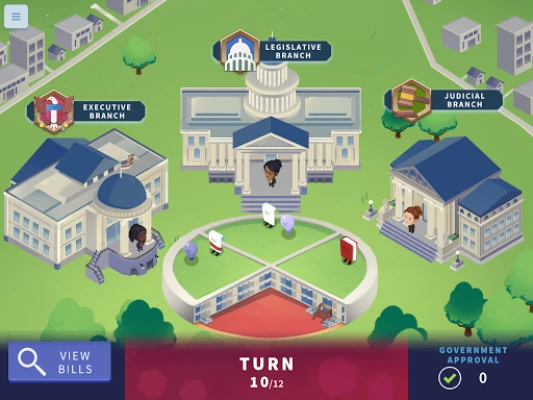
Latest Version
1.1.1
May 13, 2025
iCivics
Games
Android
0
Free
org.icivics.bop19
Report a Problem
More About Branches of Power
Mastering the Branches of Power: A Comprehensive Guide to Government Simulation
Understanding the intricate workings of government is essential for every citizen. In the interactive simulation, Branches of Power, users can engage in a dynamic learning experience that highlights the separation of powers and the checks and balances that define the United States government. This article delves into the key features of the simulation, its educational benefits, and resources for both students and teachers.
Engage with Government Leadership
In the Branches of Power simulation, participants have the unique opportunity to:
- Select Leaders for Each Government Branch: Choose representatives for the legislative, executive, and judicial branches, understanding their distinct roles and responsibilities.
- Create a Presidential Agenda: Formulate a strategic plan that outlines the priorities and initiatives of the presidency, reflecting the needs and desires of the populace.
- Introduce Bills and Pass Laws: Navigate the legislative process by proposing bills and working through Congress to enact laws that impact society.
- Apply Judicial Review: Assess the constitutionality of laws passed by Congress, ensuring that all legislation aligns with the principles of justice and fairness.
Support for English Language Learners
To enhance accessibility for English Language Learners, the Branches of Power simulation offers a variety of support tools. These include:
- Spanish Translation: Users can access translations to better understand the content and engage more fully with the simulation.
- Voiceover Features: Audio support helps learners follow along, reinforcing comprehension through auditory learning.
- Glossary of Terms: A comprehensive glossary provides definitions and explanations of key terms, aiding in vocabulary development and understanding of governmental concepts.
Resources for Educators
Teachers looking to enrich their classroom experience can find valuable resources tailored for the Branches of Power simulation. Visit iCivics for a wealth of materials designed to enhance student learning and engagement.
Learning Outcomes for Students
Through participation in the Branches of Power simulation, students will:
- Simulate Separation of Powers: Experience firsthand how the separation of powers and checks and balances function to limit government authority while facilitating the law-making process.
- Analyze Government Structure: Gain insights into the structure, functions, and processes of the legislative, executive, and judicial branches, fostering a deeper understanding of their interrelationships.
- Illustrate the Law-Making Process: Visualize and articulate the steps involved in creating laws, from initial proposal to final enactment, empowering students to appreciate the complexities of governance.
Conclusion: Empowering Future Citizens
The Branches of Power simulation serves as an invaluable educational tool, equipping students with the knowledge and skills necessary to navigate the complexities of government. By engaging with the simulation, learners not only understand the mechanics of governance but also develop critical thinking and analytical skills that are essential for informed citizenship. Whether you are a student eager to learn or a teacher seeking effective resources, the Branches of Power simulation offers a comprehensive platform for exploring the foundations of democracy.
Rate the App
User Reviews
Popular Apps










Editor's Choice











